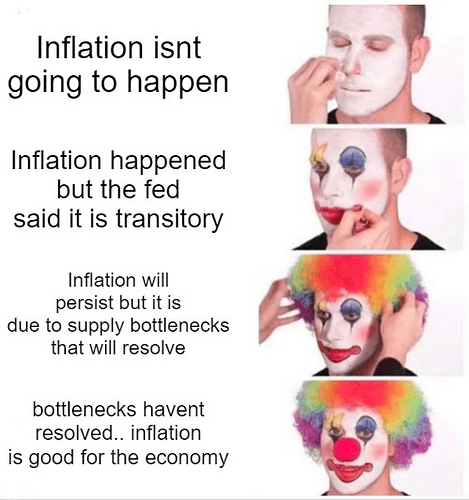Det verkar inte finnas någon större vetenskap bakom det annat än att ~2% verkar vara lättare att justera räntor efter och att “det alltid varit så”.
Riksbanken skriver:
Varför just 2 procent?
Det viktiga är att inflationen är låg och stabil.
- För hög inflation är problematiskt eftersom det brukar innebära att inflationen varierar mycket. Det skapar osäkerhet som påverkar ekonomin på ett negativt sätt (se ovan).
- För låg inflation ökar risken för deflation, det vill säga att den allmänna prisnivån faller vilket historiskt har visat sig skapa stora problem i ekonomin.
Det finns flera skäl till att inflationsmålet sattes till just 2 procent då det infördes:
- Inflationen var ungefär 2 procent när inflationsmålet introducerades och det var en vanlig nivå på inflationsmålet hos andra centralbanker.
- Ett mål på 2 procent ansågs också ge ett tillräckligt stort handlingsutrymme för penningpolitiken, det vill säga att det fanns tillräckligt utrymme att sänka räntan för att få upp inflationen i lågkonjunkturer utan att räntan skulle slå i golvet (som de flesta då ansåg vara 0 procent).
- Med en inflation på 2 procent underlättas också nödvändiga justeringar av relativa priser och löner.
Men det verkar ha sitt ursprung från en Nya Zeeländsk finansminister 1988  Where did the Fed's 2% inflation target come from?
Where did the Fed's 2% inflation target come from?
Why is the inflation target 2%?
When Don Brash became the governor of the Reserve Bank of New Zealand in September 1988, his country was slowly recovering from a spell of heated inflation; just a year or so previously, the rate had surged past 15%. At the time, central banks around the world certainly tried to ensure stable prices, but they used different measures to gauge their effectiveness: the exchange rates of their currencies, for instance, or the rate of growth of money supply.
“The Labour government at the time was very keen to deal with inflation” Brash remembered. “They instructed the Reserve Bank to get it down, without getting too precise about what getting it down meant.” A few months before Brash assumed his post, Roger Douglas, New Zealand’s finance minister, went on TV to talk about the government’s approach to monetary policy. This involved targeting inflation specifically—a method that had kicked around in economic literature for years but that hadn’t been implemented anywhere.
At the time of Douglas’ TV appearance, the inflation rate had just dipped below 10% for the first time in some years. Brash recalled that Douglas’ interviewer asked him: Was the government satisfied now, with this lower level of inflation?
No, Douglas replied, adding that he’d ideally want an inflation rate of between 0 and 1%.
The remark was entirely off the cuff, Brash said, but now that it had been made, the Reserve Bank had to work out what the inflation target should be. After Brash joined the Reserve Bank, he and his colleagues learned from the literature on cost-of-living estimates that there tended to be an “upward bias” to these calculations—that an inflation rate worked out to be 1.7%, say, might in reality be closer to 1% or 0.7%.
Brash and his team estimated the bias for New Zealand to be around 0.75% and rounded it up to 1%, which gave them a maximum target boundary of 2%. “It wasn’t ruthlessly scientific,” Michael Reddell, one of Brash’s colleagues at the Reserve Bank, admitted. But once the target was set, its gospel had to be spread, so that people could factor the 2% figure into their economic activities. “I spent an endless time traveling the country,” Brash said. “I talked to farmers, to Rotary groups, to anyone who would listen, saying: ‘This is going to be the target, so adjust your plans to that, or the social and economic costs will be considerable.'”


